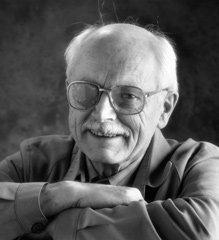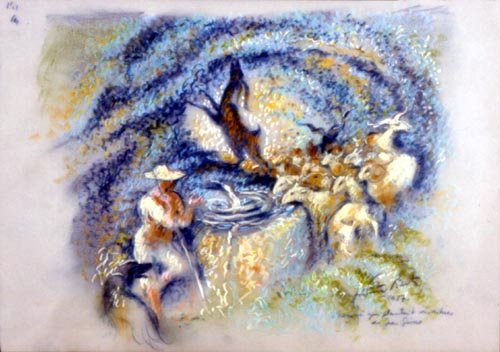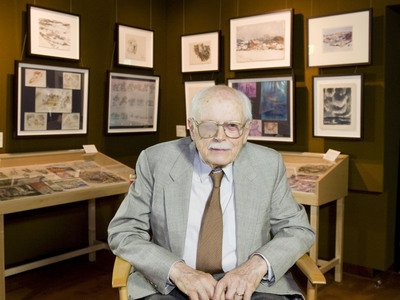《弗烈德瑞克·貝克動畫集》(Frederic Back Cortometrajes De Animacion)[DVDRip]
動漫類型:劇場動畫
文件大小:1.1GB
語言類型:繁體中文
更新時間:2017/7/27
資源發布:動漫電驢下載基地
《弗烈德瑞克·貝克動畫集》(Frederic Back Cortometrajes De Animacion)[DVDRip] 簡介: 中文名 : 弗烈德瑞克·貝克動畫集 英文名 : Frederic Back Cortometrajes De Animacion 資源格式 : DVDRip 地區 : 加拿大 語言 : 西班牙語 簡介
- 下載位址: [cartoon.ed2k.online]弗烈德瑞克·貝克動畫Frederic.Back.(1970).-.Abracadabra.avi
- 下載位址: [cartoon.ed2k.online]弗烈德瑞克·貝克動畫Frederic.Back.(1971).-.Inon.Ou.La.Conquete.Du.Feu.avi
- 下載位址: [cartoon.ed2k.online]弗烈德瑞克·貝克動畫Frederic.Back.(1972).-.La.Creation.Des.Oiseaux.avi
- 下載位址: [cartoon.ed2k.online]弗烈德瑞克·貝克動畫集(1975-1993)Frederic.Back.6.Cortometrajes.De.Animacion.avi

【資源說明】
網上有關於弗烈德瑞克·貝克動畫的合集,不過我仔細查過好象不是太全,所以又爬到網上找到了這九部動畫。喜歡的可以下載下來。最後一個全集中有六部動畫(從1975-1993年的六部動畫),動畫有的是西班牙語,有的是英語
在補充資源中有:
1975-1993年的單獨動畫,有的朋友喜歡單獨的下載,這是單獨的動畫的下載網址,最後1993年的兩種,清晰度不一樣。
以下是網絡轉來的【動畫資料】
拿大動畫史上有一位重要的功勳是弗烈德瑞克·貝克(Frederic Back),他1924年4月8日出生於德國薩爾省首府——薩爾布魯根的一個亞爾薩斯家庭。年少時曾在法國斯特拉斯堡,巴黎,勒恩等地成長及求學,直到1948年入籍加拿大。1952年時加拿大廣播公司(Canada Broadcasting Corporation,簡稱CBC)公司開始發展TV電視節目,貝克因其繪畫技巧而受邀加入 CBC,擔任繪圖師及藝術指導的工作。在此期間,貝克主要負責繪圖方面的工作,閒暇時則發展他自己特有的玻璃彩繪技巧。直到1968年,CBC公司內部成立動畫工作室,主持工作室的休伯特·提遜(Hubert Tison)邀請貝克加入,由此開始了他輝煌的動畫生涯!
第一部《魔咒》(Abracadabra,1970)(與 Graeme Ross共同執導),是關於一位小女孩如何從邪惡的魔法師手中拯救太陽的故事;
第二部《聖火》(Iron, or the Conquest of Fire,1971),敘述一個人類和動物如何從電雷之神手中奪取火種的亞爾岡京族(北美印弟安人)傳說;
第三部《小鳥的創造》(The Creation of the Birds,1972)也是改寫自一個土著傳說,內容記敘如奇跡般變化的四季奇景;
貝克在接下來的《幻想》(Illusion,1975)中譴責惡劣的都市開發--不僅破壞自然,更因消費主義的泛濫而導致過度的誘惑,最終結尾時以一個虛幻的盼望,但願下一代能將我們帶回遠古時期與自然和諧共處的時代;
《游行》(Taratata,1976)描寫一個游行隊伍,和一位用愛在內心重新改造整個事件的小孩子的心情;
《一無所有》(Nothing Everything nothing ,1978)則主要審視自宇宙創生以來,人類對大自然充滿著的矛盾情結。這部影片算是貝克動畫生涯中第一階段的最後一部作品。不論是作為藝術家、畫家或是動畫導演,貝克的表現總是讓人驚歎,而作品中充滿的人道關懷更使他成為這些領域的領導者。
1981年,他執導了《搖椅》(Crac,1981)這部歌頌加拿大魁北克省風俗傳統的動畫。片中以1850年一位居住在森林裡的樵夫,為他婚禮制造的一把搖椅貫穿整部影片。這把搖椅歷經了這位樵夫的後半生,在不斷的損毀、修復中渡過了魁北克傳統的鄉村生活。逐漸的鄉村被工業文明侵蝕,大樓林立,最後被一經群眾抗議而由核電廠改建的美術館守衛所拾得。當夜晚來臨時,在藝術品的圍繞下緩緩地逐漸喚醒它的記憶而與之共同起舞。這部影片的繪畫風格深受歐洲畫家(特別是莫奈和德加)及魁北克畫風的影響。
而貝克的下一部動畫作品《種樹的人》(The man who planted tree,1987)是一部改編自尚·紀沃諾(Jean Giono)短文的30分鐘影片。影片中的旁白采用的是完全未經修剪的原文。片中敘述一位獨居於普羅旺斯(阿爾卑斯山濱海地區)的牧羊人布非耶( Elzear Bouffier),他把本來一片荒蕪的山地種上各種樹木,並努力維護、保養林木,使這塊原本連煤炭工人都視為荒野的土地成為一片綠洲。在這部作品中,貝克竭盡心思以他最大的真誠繪制了每個畫面。Normand Roger的音樂、Noiret的旁白和貝克的優美的繪畫筆觸引領眾人經歷一段美妙的心靈之旅——最初荒涼的山地,一位心懷謙卑、感激的牧羊人到最後心中充滿著喜悅和希望。使這30分鐘的動畫成為一部感人至深的抒情影片。
1993年貝克在CBC制作的最後一部短片《大河》 ( The Mighty River,1993)是一部關為聖羅侖斯河浪漫的動畫紀錄片,片中敘述百年來河流周圍的動物和人們如何與其相處。這同樣也是部優美的敘事詩。貝克關懷生態、憐憫萬物的心境透過他筆下的人物故事而一覽
THE MENORIES OF EARTH《土地的記憶》 2002年
這是Frederic Back退休後的作品,關於夏洛特島土著人的影片,網上沒有尋找到這部的下載。倒是找到一些相關的資料和網址,如果有朋友能找到下載,補充上。
地球的記憶(回憶錄法國地球)
http://fredericback.com/illustrateur/cinem...en.shtml
紀錄片,膚色,2002
運行時間:1點10分00秒
導演:尚勒米爾
動畫:弗雷德裡
講述:弗拉斯塔弗拉讷
照相機:喬治Dufaux,馬丁勒克萊爾,雅克布法德
水下照相機:馬裡奧西爾
動畫相機:克勞德拉皮埃爾
動畫制作經理:休伯特蒂松
位置聲音:克勞德拉海伊,休伯特梅斯日德加斯蒂讷
圖片編輯:阿蘭貝呂默
聲音設計:克勞德Beaugrand
原創音樂和編排:西蒙勒克萊爾,與理查德甘合作
歌手:Guujaaw
制片人:羅傑Frappier,讓勒米爾和克勞德卡地亞
參加者:詹姆斯哈特,弗雷德裡克和Ghylaine返回,Guujaaw,馬貝爾體育威廉姆斯
該紀錄片被槍殺的夏洛特皇後群島起飛的不列顛哥倫比亞省海岸,還包括由Frédéric回到創造了一些動畫序列(最後努力,迄今用他的電影相同的過程。)導演讓勒米爾決定將他的探索海達境內的公司,世界著名雕刻家詹姆斯哈特鷹氏族酋長。 他們通過海達探討藝術和神話,地球的記憶為逾萬年抓獲自然的本質。 大烏鴉一樣的偷走了月亮,兩位藝術家試圖解放過去的精神,它可以教我們保護祖先的土地和周圍水域。 這部影片的目的在於成為創造頌和地球母親,土地,人民呼吁海達瓜敬意。
這一復雜的生產原來是一個失望回到弗雷德裡克,因為它沒有顯示年輕海達雕刻誰了6圖騰柱工作期間拍攝的紀錄片。 他也希望能有過的,因為他喜歡的電台,就加拿大的動畫工作相同的條件
The Mighty Animator, Frédéric Back
by William Moritz
Frédéric Back
72-year-old Frédéric Back, two time Academy Award winner for Crac! and The Man Who Planted Trees, was recently in Los Angeles for the opening of an exhibition of his animation drawings at the Academy of Motion Picture Arts and Sciences. The exhibition, with art work from nine of his films, will run until August 25, although the panels of The Man Who Planted Trees and The Mighty River will be sent to the Hiroshima Film Festival after August 11. I got a chance to ask Mr. Back a few questions just before the opening night reception.
Moritz: Do all your animation films, from Abracadabra in 1970 until The Mighty River in 1993 belong to the Société Radio Canada [the French language division of the CBC]?
Back: Yes, that's right. I was an employee of Radio Canada--sometimes a freelance, because depending on how interesting I found the work, sometimes I'd quit, and then return at a later date.
Moritz: Now they've closed down the animation section of Radio Canada ...
Back: Yes. And it's too bad. Hubert Tison at Radio Canada really gave me the opportunity to work in good conditions. Before that, I wasn't so interested in animation. The National Film Board was doing lots of fine animation, but no other place had good equipment and professional cameramen that could do that kind of work. Then Tison built up a professional animation studio at Radio Canada.
I had made many short pieces of animation for music broadcasts and documentaries, so when I began with Radio Canada, I made mainly short films. But the improved conditions Tison offered meant a more complex, higher standard of animation, and I gradually learned to make better, more complex films.
One of the good ideas Tison proposed to Radio Canada was an international exchange of animation films. Before that, and still now, there are regular exchanges of usual live-action television programs, but nothing with animation until Tison initiated it. It was very important, because it meant you could produce high-quality animations relatively cheaply, since for each film Radio Canada made, they got an additional 20 or more--one from each of the other participating countries. This exchange functioned for about 15 years, and it only stopped because gradually too many people too often would buy poor, cheap animation films just to have something to exchange, and the countries that worked hard for higher quality were disappointed. It was really too bad it stopped, since it gave work to animators in many countries, as well as Canada, and encouraged the production of short films.
The Mighty River
© SRC
Moritz: Is Hubert Tison still with Radio Canada?
Back: No, he retired. After the animation department was gone, I quit, and there was nothing really to interest Hubert. Closing down animation was such a waste. The wonderful computer-assisted camera, which allowed me to make so many camera movements, rotations and dissolves for The Mighty River (so that it seemed spacious, multiplane and flowing like the river), I was the only person who ever got to use it. Where is it now?
Moritz: At the same time, the National Film Board was also being cut back.
Back: Unfortunately, yes. The problem today is that there are no more artists and thinkers at the head of organizations, only bureaucrats who make notes and count numbers. They have no ideas to offer. They don't take risks--and artistic creation is always taking a risk; you can't guarantee how it will come out, there's no safety in art. And the bureaucrats actually don't even seem to be able to count numbers very well, because after Radio Canada dropped the animation department, I learned that more than half of the money that comes back to Radio Canada from sales of product comes from animation films, which are actually few in number: I made 9, Paul Driessen made 3, Graeme Ross made 2--that means 15 or so animation films gave as much income to Radio Canada as hundreds of hours of regular live-action programs. And the animation films also won hundreds of prizes at film festivals.
Moritz: One terrifying thought to me is that since the same Radio Canada which closed down the Animation Department owns your films, they could presumably withdraw them from circulation, not show them, they could be lost, decay in the vaults.
Back: Well, at least now they show them quite a bit, especially at fesitvals, where they are in demand. And Man Who Planted Trees and Mighty River are available on videocassette, so they are used by teachers and environmentalists continually.
Moritz: But even now, your earlier films, like the two based on Algonquin and Micmac myths, are hardly seen--though the artworks from them in this exhibit are very beautiful. In any case, does the demise of Radio Canada and the crippled National Film Board mean that you can't make any more animation?
Back: No, actually I could. I have had several proposals, even one from National Film Board, but I promised my wife Ghylaine not to take on another large animation project, because she became a sort of animation widow during the long making of Man Who Planted Trees and Mighty River. Now I have actually started animation work on a te10 minute film sponsored by Trees for Life, in Wichita, Kansas, which will promote planting fruit trees in third world countries. Also, I never really stop working. Right after Mighty River I made a number of book illustrations, one about Inuits, one about beluga whales, and of course The Mighty River book itself. And I worked a lot with Greenpeace, and other organizations that protect animals, seals. There's always a lot of work to do.
The Man Who Planted Trees
© SRC
Moritz: After spending so much time making your filmed images move and change, do you mind seeing them as still book illustrations?
Back: No, I think they work very well as books, and I always make some special artworks just for the books. Mighty River is particularly important as a book, because in 24 minutes you can't give too many facts, since the visual information is so rich, you would get dizzy if there were statistics, too. But in the book there are many details and facts that you can study at leisure, and learn, perhaps intellectually, as you learn emotionally from the film. The Mighty River book has been translated into Japanese, as well, so I hope the Japanese fishing fleet read it and disappear.
Moritz: Surprisingly, even Crac! worked very well as a book, I thought. One of the things that I liked most in Crac! the film was the way great Canadian paintings--Cornelius Krieghoff's Merrymaking or Lucius O'Brien's Sunrise on the Saguenay, for example--just seem to "happen" in the course of the action. When the ASIFA-Canada Bulletin devoted an issue to you in 1988, they printed a picture of your early art teacher, Mathurin Méheut, with his class (including you)--and a few of his sketches. He seems like such a romantic figure, you should make a film about him in which his paintings could also "just happen" in the course, since he is almost unknown here.
Back: Not a bad idea. He's getting better known in France: there's a museum devoted to him, and traveling exhibitions. When he died, his wife gave some 4,000 drawings to start the museum. His work is a rich documentation of something that no longer exists. During the war, when I was studying with him, Brittany was almost untouched, following its typical way of life for centuries. I had the opportunity to go with him and make drawings beside him. "Draw everything," he told us, "it will all disappear." He was right. Now in Brittany, there is hardly a port. No Bretons in traditional costume, no fishermen, no fish. No colorful nets of string and rope, no iron and wood tools and boats: everything is plastic. It's lost all its character and beauty. The Breton fishermen used to dress all in red or blue, and they would repair their clothes with patches from other material so they were like mosaics of colors, walking paintings. What Méheut drew is a fantastic testimony, a documentation of this lost world.
In France there is now a book about him, and I was interviewed by the director of a television documentary about him, but the program was not really very good, as they did not have enough money to give the full impression of the scope and color of Méheut's achievement. That's where I, too, would have trouble with such a project: I'm not a good enough diplomat, a negotiator to make a deal to support a project on Méheut, as it would be another big film.
Moritz: That's where we miss Hubert Tison.
Back: Yes indeed. I would have the idea, and he would make it possible. My wife was also enormously supportive and helpful--too few animators have such a good, understanding helper.
Moritz: Are any of your children animators?
Back: No, but in a way, they are all involved with art. My daughter is a painter, and she also works with batiks. My younger son is an illustrator, who specializes in historical costumes and settings. And my older son is a biologist who worked for the World Health Organization, for 10 years he was in Africa, and he teaches using his knowledge of graphics, including computer graphics: he's very clever with computers.
Crac!
© SRC
I'm very honored and happy that the Academy is making this exhibition. Radio Canada framed all these artworks, and then they have been sitting around in a cellar.
I hope this exhibition is a success, not just for me, but because there are so many animators around the world who do fine artwork that should be exhibited, too. What you see on the screen is not a reflection of each individual drawing or sculpture, so it's wonderful to have a chance to see the artworks, and it can be very instructive to other artists.
When you're in your little room by yourself drawing, it can be depressing: it's so repetitive, and you never know, drawing after drawing, what will happen when they get on film; you just have to have faith in your project, and keep on. An exhibition like this should be a stimulation to work hard, and keep steadfast in your belief in the project, and give each artwork maximum quality.
William Mortiz teaches film and animation history at the California Institute of the Arts.

《超人/蝙蝠俠:公眾之敵》(Superman Batman Public Enemies)[DVDRip],劇場動畫、資源下載
夏洛的網 Charlottes.Web.1973.1080p.WEBRip.DD2.0.x264-monkee 2.52GB
《EVANGELION新劇場版:破 》(EVANGELION 2.22 YOU CAN (NOT) ADVANCE)[NES(原EVA-FANS制作組)][AVC_AAC][720P][BDRip]
《頭文字D 劇場版+特別版》(INITIAL D)[RMVB],劇場動畫、資源下載
薩瓦傳奇 A.Warriors.Tail.3D.2015.DUBBED.1080p.BluRay.x264-GUACAMOLE 5.8GB
《蝙蝠俠:第一年》(Batman.Year.One)[BDRip]
《飛屋環游記》(Up)3E帝國無水印版本[RMVB],劇場動畫、資源下載
[干物妹!小埋_我家有個魚干妹][Himouto! Umaru
[完整動畫][異域-11番小隊][玉子市場Tamako Market][BDRIP][720P][X264-10bit_AAC]
[OVA]《閃亮☆計劃》(Kirameki-Project)[天香字幕社OVA新番]第01、02話 發布更新 mkv+rmvb[DVDRip]
[動漫周邊]《こぼれたパズル》[C64][同人音楽][空色絵本][6th Mini Album][TTA],動漫周邊、資源下載
[新番連載][fansub][7月泡麵番][千歲get you][480P][22]
[新番連載]【白月字幕組】★四月新番【BABY STEPS 網球優等生】第02話 簡體 720P
[電視動畫]《旋風管家》(Hayate the combat butler)[華盟字幕社][RMVB+AVI][全52話][TVRip]
[新番連載]【異域字幕組】★ [7月新番][日本國有鐵道公安隊][RAIL WARS!][07][720P][簡體][MP4]
[新番連載]【諸神字幕組】[男子游泳部 Free!][09][720P][中日文字幕][MKV]
[動漫周邊]《一騎當千XtremeXrcutor主題曲》(Ikki Tousen Xtreme Xrcutor)[ED Single-Endless Soul~終わりなき戦士~][附BK][APE+MP3(320Kbps)]
[電視動畫]《歡迎加入NHK!》(Welcome to NHK!)[3DM字幕組][7月新番][RMVB][02更新中][TVRip],電視動畫、資源下載


